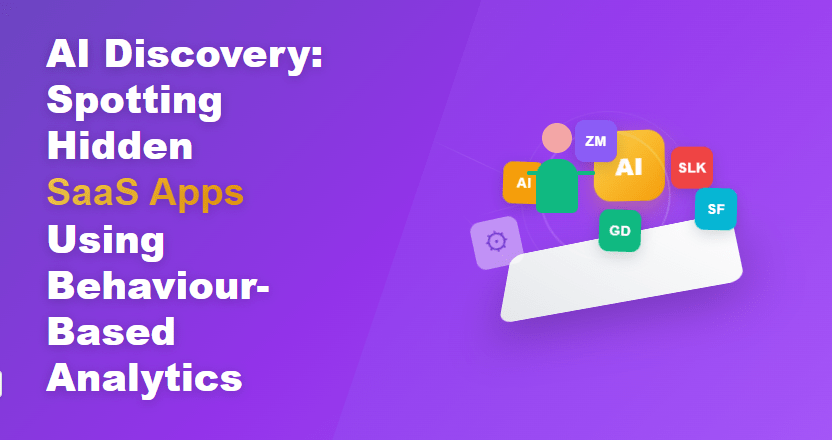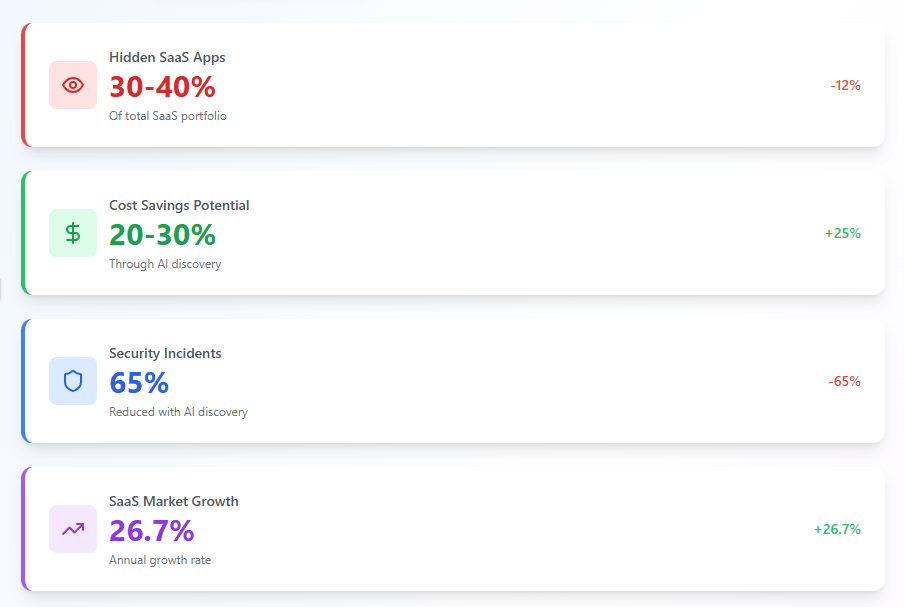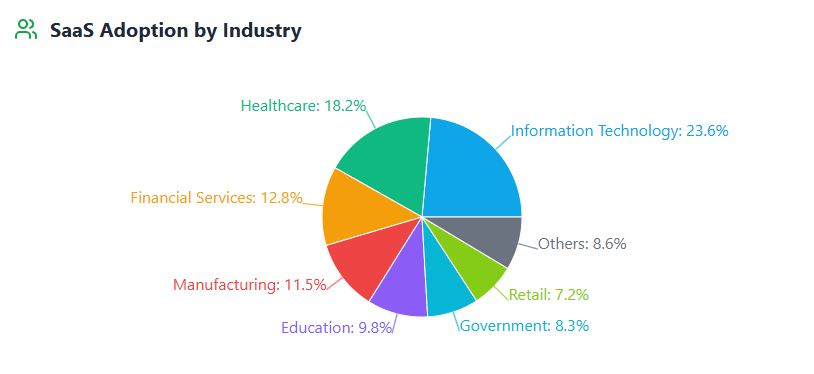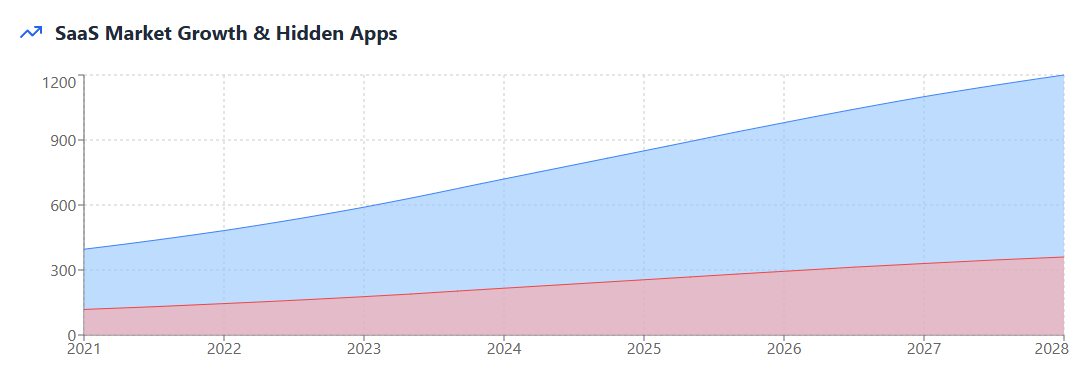
The rapid proliferation of Software as a Service (SaaS) applications has transformed how organizations operate, enabling unprecedented flexibility and efficiency. However, this digital transformation has also created a significant challenge: shadow IT and hidden SaaS applications that operate outside of formal oversight. With the average enterprise using over 80 different SaaS applications, many organizations struggle to maintain comprehensive visibility into their software ecosystem.
Artificial Intelligence (AI) and behavior-based analytics have emerged as powerful solutions to this challenge, offering sophisticated methods to discover, monitor, and manage hidden SaaS applications within organizational networks. This comprehensive guide explores how AI-powered discovery systems work, their benefits, and practical implementation strategies for modern businesses.
The stakes for effective SaaS management have never been higher. Organizations that fail to identify and manage their complete SaaS portfolio face significant risks including security vulnerabilities, compliance issues, budget overruns, and operational inefficiencies. By leveraging AI-driven discovery techniques, businesses can gain unprecedented visibility into their software landscape and make data-driven decisions about their technology investments.
What is AI-Powered SaaS Discovery?
AI-powered SaaS discovery represents a revolutionary approach to identifying and cataloging software applications within an organization’s digital ecosystem. Unlike traditional discovery methods that rely on manual audits or simple network scanning, AI-driven systems use sophisticated algorithms to analyze user behavior patterns, network traffic, and application usage data to detect both sanctioned and unsanctioned SaaS applications.
This advanced approach combines machine learning algorithms, natural language processing, and behavioral analytics to create a comprehensive picture of an organization’s SaaS landscape. The system continuously monitors network activity, user interactions, and data flows to identify application usage patterns that might indicate the presence of previously unknown software tools.
The technology operates by establishing baseline behavioral patterns for known applications and users, then flagging anomalies or new patterns that suggest the introduction of new SaaS tools. This proactive approach ensures that organizations maintain real-time visibility into their evolving software environment, enabling better security, compliance, and cost management.
Traditional discovery methods often miss applications that operate through web browsers, mobile devices, or encrypted connections. AI-powered systems overcome these limitations by analyzing subtle behavioral indicators and traffic patterns that reveal application usage regardless of the access method or device type.
The Hidden SaaS Challenge
The proliferation of SaaS applications has created what many IT professionals call “SaaS sprawl” – the uncontrolled growth of software subscriptions and applications across an organization. This phenomenon is driven by the ease of SaaS adoption, where individual employees or departments can quickly sign up for new tools without going through traditional procurement processes.
Research indicates that organizations typically have 30-40% more SaaS applications than they realize, with many of these hidden applications posing significant risks to security, compliance, and budget management. These shadow applications often lack proper security controls, may not comply with organizational policies, and can create vulnerabilities that cybercriminals exploit.
The financial impact of hidden SaaS applications is substantial. Organizations frequently discover they’re paying for duplicate functionality across multiple applications, maintaining subscriptions for tools that are no longer used, or missing opportunities for volume discounts through centralized procurement. SaaS spend management becomes increasingly difficult when a significant portion of the application portfolio remains invisible to traditional monitoring tools.
From a security perspective, hidden SaaS applications represent one of the most significant risks facing modern organizations. These applications often have access to sensitive data, may not meet organizational security standards, and can create unauthorized data flows that violate compliance requirements. The challenge is compounded by the fact that many employees use personal accounts for business purposes, making it difficult to maintain proper access controls.
Compliance implications are equally serious, as hidden applications may process regulated data without appropriate controls or documentation. Organizations in highly regulated industries face particular challenges, as they must be able to demonstrate complete visibility and control over their data processing activities.

How Behavior-Based Analytics Works
Behavior-based analytics for SaaS discovery operates on the principle that every application and user exhibits unique behavioral patterns that can be identified and analyzed through AI algorithms. These systems collect and analyze vast amounts of data points including network traffic patterns, user interaction sequences, data transfer volumes, authentication patterns, and temporal usage characteristics.
The process begins with data collection from multiple sources including network infrastructure, endpoint devices, cloud access security brokers (CASBs), and identity management systems. This comprehensive data collection ensures that the AI system has access to all relevant behavioral indicators regardless of how or where applications are accessed.
Machine learning algorithms then process this data to identify patterns and anomalies. The system learns to recognize the behavioral signatures of known applications while flagging unusual patterns that may indicate new or unauthorized software usage. Advanced algorithms can distinguish between different types of applications based on their communication patterns, data exchange characteristics, and user interaction models.
Natural language processing capabilities enhance the discovery process by analyzing content patterns, file types, and communication protocols to better understand application functionality and classification. This helps distinguish between different categories of applications and assess their potential business impact and risk profile.
The behavioral analysis extends beyond simple application identification to include usage patterns, user adoption rates, and feature utilization metrics. This comprehensive analysis provides valuable insights for SaaS optimization decisions and helps organizations understand which applications provide genuine business value.
Real-time monitoring capabilities ensure that new applications are detected quickly, enabling prompt risk assessment and policy enforcement. The system continuously updates its behavioral models based on new data, improving accuracy and reducing false positives over time.
AI Technologies Behind SaaS Discovery
The foundation of effective AI-powered SaaS discovery rests on several key technologies working in concert to provide comprehensive visibility into organizational software usage. Machine learning algorithms form the core of these systems, with supervised learning models trained on known application patterns and unsupervised learning techniques used to identify novel or unknown applications.
Deep learning neural networks excel at pattern recognition in complex, high-dimensional data sets typical of network traffic and user behavior analysis. These networks can identify subtle correlations and patterns that traditional rule-based systems might miss, making them particularly effective for discovering applications that attempt to blend in with normal network traffic.
Natural Language Processing (NLP) technologies analyze textual content, file metadata, and communication patterns to better understand application functionality and classification. Advanced NLP models can identify applications based on their data processing characteristics, helping distinguish between different types of software tools and their potential business purposes.
Anomaly detection algorithms continuously monitor for deviations from established patterns, flagging potential new applications or changes in existing application usage. These systems use statistical models and machine learning techniques to establish baseline behaviors and identify significant deviations that warrant investigation.
Computer vision techniques are increasingly used to analyze user interface patterns and application screenshots to identify and classify software tools. This visual recognition capability is particularly useful for identifying applications accessed through web browsers or mobile devices where traditional network analysis might be limited.
Graph analytics technologies map relationships between users, applications, and data flows to provide comprehensive visibility into the organizational software ecosystem. These techniques help identify not just individual applications but also the complex interconnections and dependencies between different software tools.
Benefits of AI-Driven SaaS Discovery
The implementation of AI-powered SaaS discovery systems delivers substantial benefits across multiple organizational dimensions, fundamentally transforming how businesses understand and manage their software portfolios. Enhanced security represents one of the most significant advantages, as organizations gain complete visibility into all applications accessing their data and networks.
Comprehensive application discovery enables proactive risk management by identifying potentially vulnerable or non-compliant applications before they can cause security incidents. Organizations can quickly assess the security posture of newly discovered applications and implement appropriate controls or restrictions as needed.
Cost optimization becomes more effective when organizations have complete visibility into their SaaS portfolio. AI-driven discovery reveals duplicate applications, unused subscriptions, and opportunities for consolidation or volume discounts. Many organizations discover they can reduce their SaaS spending by 20-30% simply by eliminating redundant or underutilized applications identified through comprehensive discovery.
Compliance management improves significantly when organizations can demonstrate complete visibility and control over their software environment. Automated discovery and classification help ensure that all applications processing regulated data meet appropriate compliance requirements and security standards.
The user experience benefits from better application governance and management. IT teams can provide more effective support when they have complete visibility into the applications users rely on, and they can make more informed decisions about which tools to support or standardize across the organization.
Cloud cost optimization extends beyond infrastructure to include comprehensive SaaS spend management, as organizations gain the visibility needed to make data-driven decisions about their software investments. This holistic approach to cost management can deliver substantial savings and improve overall technology ROI.
Operational efficiency improves as IT teams spend less time on reactive discovery and more time on strategic optimization initiatives. Automated discovery processes reduce the manual effort required to maintain accurate software inventories and enable more proactive management approaches.

Implementation Strategies
Successful implementation of AI-powered SaaS discovery requires a systematic approach that addresses technical, organizational, and governance considerations. The implementation process typically begins with establishing clear objectives and success criteria, ensuring that the discovery system aligns with organizational goals and requirements.
Data source integration represents a critical early step, as the effectiveness of AI-driven discovery depends heavily on the quality and comprehensiveness of input data. Organizations must establish connections to network infrastructure, endpoint management systems, cloud access brokers, and identity management platforms to ensure complete visibility.
Baseline establishment involves training the AI system on existing known applications and normal usage patterns. This initial training phase is crucial for developing accurate behavioral models and reducing false positives in the discovery process. Organizations should plan for an extended baseline period to ensure system accuracy.
Policy framework development ensures that discovered applications can be quickly assessed and categorized according to organizational risk tolerance and compliance requirements. Clear policies for application approval, risk assessment, and remediation help streamline the management of newly discovered applications.
User communication and change management are essential for successful implementation. Organizations must balance the need for comprehensive discovery with user privacy concerns and ensure that employees understand the business rationale for enhanced monitoring capabilities.
Integration with existing security and management tools maximizes the value of discovery insights. Organizations should plan for integration with security information and event management (SIEM) systems, governance platforms, and SaaS management tools to ensure that discovery results drive appropriate action.
Continuous optimization involves regular review and refinement of discovery algorithms, policies, and processes. Organizations should plan for ongoing tuning and improvement to maintain system effectiveness as their software environment evolves.
Real-World Applications and Use Cases
AI-powered SaaS discovery has proven valuable across diverse industry sectors and organizational contexts, with implementations ranging from small businesses to large enterprises. In the financial services sector, banks and investment firms use AI discovery to identify applications that may be processing regulated data without appropriate controls, ensuring compliance with strict financial regulations.
Healthcare organizations leverage behavioral analytics to discover applications that might be handling protected health information (PHI) without proper HIPAA compliance measures. The ability to quickly identify and assess new applications is crucial for maintaining patient data privacy and avoiding costly compliance violations.
Technology companies often face unique challenges with rapid application adoption and developer-driven tool selection. AI discovery helps these organizations maintain visibility into their expanding software portfolios while supporting innovation and agility. The system can identify when development teams adopt new tools and ensure appropriate security and compliance measures are implemented.
Educational institutions use AI-powered discovery to manage the complex mix of administrative, academic, and research applications across their diverse user communities. The system helps identify applications that might pose risks to student data privacy or institutional intellectual property.
Government agencies implement AI discovery to maintain security and compliance in environments where unauthorized software usage can have serious national security implications. The comprehensive visibility provided by these systems helps ensure that all software tools meet appropriate security standards and authorization requirements.
Manufacturing organizations use behavioral analytics to discover applications that might be accessing industrial control systems or sensitive intellectual property. The ability to identify and assess these applications quickly is crucial for protecting operational technology and competitive advantages.
Professional services firms rely on AI discovery to manage client data privacy and confidentiality requirements across diverse software portfolios. The system helps identify applications that might be processing client information without appropriate security controls or contractual protections.
Best Practices for AI SaaS Discovery
Implementing effective AI-powered SaaS discovery requires adherence to established best practices that ensure system effectiveness while maintaining organizational productivity and user satisfaction. Data quality management represents a fundamental requirement, as AI systems are only as effective as the data they analyze. Organizations must establish comprehensive data collection processes that capture relevant behavioral indicators while respecting privacy requirements.
Regular model training and refinement ensure that AI algorithms remain effective as organizational software environments evolve. This involves continuous feedback loops that improve pattern recognition accuracy and reduce false positives over time. Organizations should plan for regular model updates and performance assessments to maintain system effectiveness.
Cross-functional collaboration between IT, security, compliance, and business teams ensures that discovery insights translate into appropriate action. Regular review meetings and clear escalation procedures help ensure that newly discovered applications are quickly assessed and managed according to organizational policies.
Automated response capabilities can significantly improve the efficiency of SaaS discovery programs. Organizations should implement automated workflows for common scenarios such as blocking high-risk applications, notifying relevant stakeholders of new discoveries, and initiating risk assessment processes.
Documentation and reporting practices ensure that discovery activities support compliance and audit requirements. Comprehensive records of discovered applications, risk assessments, and remediation actions provide valuable evidence of organizational due diligence and security practices.
User education and awareness programs help employees understand the importance of proper application usage and the business rationale for discovery initiatives. Clear communication about discovery capabilities and expectations can improve cooperation and reduce resistance to monitoring activities.
Privacy protection measures ensure that discovery activities respect employee privacy rights while achieving necessary security and compliance objectives. Organizations should implement appropriate data retention policies, access controls, and privacy protection measures to balance discovery effectiveness with privacy requirements.
Common Challenges and Solutions
Organizations implementing AI-powered SaaS discovery often encounter predictable challenges that can be addressed through proper planning and preparation. False positive management represents one of the most common issues, as AI systems may initially flag legitimate applications or activities as suspicious. This challenge can be addressed through careful baseline establishment, regular model tuning, and comprehensive application whitelisting processes.
Data privacy concerns frequently arise as employees worry about monitoring and surveillance implications. Organizations can address these concerns through transparent communication about discovery objectives, clear privacy policies, and technical measures that focus on application behavior rather than individual user activities.
Integration complexity can challenge organizations with diverse technology environments and legacy systems. Successful implementations often require phased approaches that prioritize high-value data sources and gradually expand coverage as technical capabilities mature.
Organizational resistance may emerge from business units that value application autonomy and flexibility. This challenge requires strong executive sponsorship, clear communication of business benefits, and collaborative approaches that balance security requirements with operational needs.
Resource allocation challenges often arise as organizations underestimate the ongoing effort required for effective discovery program management. Successful implementations require dedicated resources for system management, policy development, and incident response activities.
Vendor selection complexity can overwhelm organizations facing numerous technology options and conflicting vendor claims. Careful evaluation of vendor capabilities, reference checking, and proof-of-concept testing help ensure successful vendor selection and implementation.
Scale and performance issues may emerge as organizations attempt to monitor large, complex environments with diverse application portfolios. These challenges often require careful architecture planning, performance optimization, and graduated implementation approaches.

Future Trends in AI-Powered SaaS Management
The evolution of AI-powered SaaS discovery is accelerating, driven by advances in artificial intelligence, changes in software delivery models, and growing organizational sophistication in technology management. Predictive analytics capabilities are emerging that not only discover existing applications but also predict future adoption patterns and potential risks.
Advanced behavioral analytics are incorporating more sophisticated psychological and sociological models to better understand user behavior and application adoption patterns. These enhanced models provide deeper insights into why certain applications are adopted and how usage patterns evolve over time.
Integration with zero-trust security models is driving the development of more granular application assessment and control capabilities. AI discovery systems are evolving to support dynamic risk assessment and adaptive access controls that adjust based on real-time behavior analysis.
Edge computing and distributed application architectures are creating new challenges and opportunities for AI-powered discovery. Systems are adapting to monitor and analyze applications that operate across multiple environments and platforms, requiring more sophisticated distributed intelligence capabilities.
Privacy-preserving analytics techniques are emerging that enable comprehensive discovery while protecting individual privacy rights. These approaches use advanced cryptographic techniques and federated learning models to analyze behavior patterns without exposing sensitive personal information.
Autonomous remediation capabilities are developing that can automatically respond to certain types of discovery events without human intervention. These systems can implement predefined responses to common scenarios while escalating complex situations for human review.
The convergence of AI discovery with other emerging technologies such as blockchain, quantum computing, and advanced encryption is creating new possibilities for secure and comprehensive software management. These technological combinations promise to deliver unprecedented visibility and control capabilities while maintaining strong privacy and security protections.
How Binadox Leverages AI for SaaS Discovery
Binadox represents a leading example of how AI-powered SaaS discovery can be implemented effectively to deliver comprehensive visibility and management capabilities for modern organizations. The platform combines advanced behavioral analytics, machine learning algorithms, and comprehensive data integration to provide real-time discovery and assessment of SaaS applications across organizational environments.
The Binadox approach to AI-powered discovery emphasizes accuracy and actionability, using sophisticated algorithms to minimize false positives while ensuring comprehensive coverage of organizational software portfolios. The system continuously learns from organizational patterns and feedback to improve discovery accuracy and relevance over time.
Integration capabilities within Binadox enable seamless connection to existing organizational systems including cloud infrastructure, identity management platforms, and security tools. This comprehensive integration ensures that discovery insights can be quickly translated into appropriate action through existing organizational processes and workflows.
The platform’s behavioral analytics capabilities extend beyond simple application discovery to include detailed usage analysis, cost optimization recommendations, and risk assessment features. This comprehensive approach helps organizations not just discover applications but also optimize their software investments and manage associated risks.
Binadox’s AI-driven approach to SaaS cost management provides organizations with unprecedented visibility into their software spending patterns and optimization opportunities. The system can identify duplicate applications, unused subscriptions, and opportunities for consolidation or renegotiation.
The platform’s reporting and analytics capabilities provide executive-level visibility into SaaS portfolio performance, costs, and risks. These insights enable data-driven decision-making about software investments and help organizations align their technology spending with business objectives.
Advanced automation features within Binadox help organizations respond quickly to discovery events and implement consistent policies across their software portfolios. The system can automatically categorize applications, assess risks, and initiate appropriate response workflows based on organizational policies and preferences.
Conclusion
AI-powered SaaS discovery using behavior-based analytics represents a fundamental shift in how organizations understand and manage their software environments. As the SaaS ecosystem continues to expand and evolve, traditional discovery methods prove increasingly inadequate for maintaining comprehensive visibility and control.
The benefits of implementing AI-driven discovery systems extend far beyond simple application identification to encompass comprehensive cost optimization, security enhancement, compliance management, and operational efficiency improvements. Organizations that successfully implement these systems typically see significant returns on investment through reduced security risks, lower software costs, and improved operational efficiency.
The technology foundation for effective AI-powered discovery continues to mature, with advances in machine learning, behavioral analytics, and integration capabilities making these systems more accurate, comprehensive, and actionable. Organizations considering implementation can benefit from the lessons learned by early adopters and the increasingly sophisticated vendor solutions available in the market.
Success with AI-powered SaaS discovery requires more than just technology implementation; it demands organizational commitment to comprehensive software governance, cross-functional collaboration, and continuous improvement processes. Organizations that approach discovery as part of a broader digital transformation initiative tend to achieve better results than those that treat it as a purely technical implementation.
The future of SaaS management will be increasingly driven by AI-powered insights and automation, making early adoption of discovery capabilities a strategic advantage. Organizations that establish comprehensive visibility and control over their software portfolios today will be better positioned to leverage emerging technologies and opportunities in the evolving digital landscape.
As software continues to become more central to organizational operations and competitive advantage, the ability to effectively discover, assess, and manage SaaS applications will become a core competency for successful businesses. AI-powered discovery systems provide the foundation for this competency, enabling organizations to harness the benefits of diverse software ecosystems while managing associated risks and costs effectively.
The investment in AI-powered SaaS discovery capabilities pays dividends not only in immediate cost savings and risk reduction but also in building organizational capabilities for the future. As software environments become increasingly complex and dynamic, the organizations with the best visibility and control capabilities will be best positioned for success in the digital economy.

